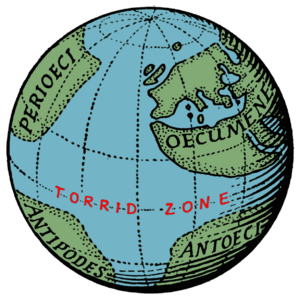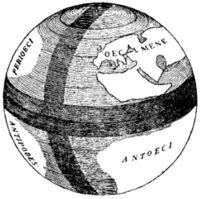Crates of Mallus facts for kids

Crates of Mallus (Greek: Κράτης ὁ Μαλλώτης, Krátēs ho Mallṓtēs; fl. 2nd century BC) was an important Greek scholar. He was a grammarian, meaning he studied the rules of language, and a Stoic philosopher, someone who thought deeply about life and the world. Crates was in charge of the famous library in Pergamum and led a school of literature there. He is most famous for his detailed studies of Homer's poems and for creating the earliest known globe of the Earth.
Life of Crates
Crates was born in a city called Mallus in Cilicia. He grew up in Tarsus before moving to Pergamon, a very important city in ancient times. In Pergamon, he worked under the kings Eumenes II and Attalus II.
He started the school of grammar in Pergamon and was the head of its famous library. Many students learned from him, including Hermias and Zenodotus.
Around 168 BC or 159 BC, Crates visited Rome as an ambassador, which is like a diplomat representing his city. While in Rome, he had an accident and broke his leg after falling into an open sewer. Because of his injury, he had to stay in Rome for a while. During this time, he gave many lectures about grammar and how to study ancient texts. His talks were very important because they helped the Romans start their own studies of grammar and literature.
Crates' Works and Ideas
Crates believed there was a big difference between "criticism" and "grammar." He thought that a critic should explore everything that could help understand literature better. A grammarian, on the other hand, would mainly focus on applying language rules to understand specific parts of a text, fix mistakes, and check things like how words are pronounced or accented. Because of his focus on deep understanding, Crates was sometimes called Kritikos, meaning "the critic."
Just like another famous scholar named Aristarchus of Samothrace, Crates spent most of his time studying the works of Homer, especially the Iliad and the Odyssey. Because of this, he was also known as Homerikos. Crates wrote a long commentary on these poems. He believed that Homer's poems contained hidden scientific or philosophical truths, not just stories.
Besides his work on Homer, Crates also wrote about other ancient authors like Hesiod, Euripides, and Aristophanes. He also wrote about the Attic dialect (a form of ancient Greek), geography, natural history, and agriculture.
The Globe of Crates
One of Crates' most famous achievements was creating the earliest known globe of the Earth. This was a huge step in understanding our planet's shape.
The ancient writer Strabo described Crates' globe. Strabo said that to truly understand the world, one should use a globe like Crates's. He even suggested that a globe should be at least ten feet (about 3 meters) across so that the different parts of the world could be clearly seen.
Crates believed in the theory of five climate zones on Earth. He thought that the very hot "torrid zone" around the middle of the Earth was covered by the Ocean. He also imagined that just like there were people living in the temperate zone on our side of the ocean, there must be other people living in a similar temperate zone on the other side of the ocean.
His classic drawing of the globe showed the known world (Europe, North Africa, and Asia) and three other continents he imagined:
- The Perioeci
- The Antipodes
- The Antioeci
Interestingly, the Perioeci and Antipodes roughly match North America and South America, which do exist! However, the continent of the Antioeci, also known as Terra Australis, doesn't exist as a single large continent, though parts of it might be like Australasia and southern Africa. Crates also imagined a ring of water around the Earth at the Equator, but in reality, there's a ring of water at about 60 degrees South latitude.
Honours
A place in Antarctica called Crates Bay is named after Crates of Mallus to honor his contributions to geography and understanding the Earth.


